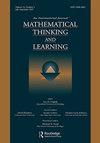Kindergarten students’ mathematics knowledge at work: the mathematics for programming robot toys
IF 1.5
4区 教育学
Q2 EDUCATION & EDUCATIONAL RESEARCH
引用次数: 17
Abstract
ABSRACT The purpose of this study was to explore how kindergarten students (aged 5–6 years) engaged with mathematics as they learned programming with robot coding toys. We video-recorded 16 teaching sessions of kindergarten students’ (N = 36) mathematical and programming activities. Students worked in small groups (4–5 students) with robot coding toys on the floor in their classrooms, solving tasks that involved programming these toys to move to various locations on a grid. Drawing on a semiotic mediation perspective, we analyzed video data to identify the mathematics concepts and skills students demonstrated and the overlapping mathematics-programming knowledge exhibited by the students during these programming tasks. We found that kindergarten children used spatial, measurement, and number knowledge, and the design of the tasks, affordances of the robots, and types of programming knowledge influenced how the students engaged with mathematics. The paper concludes with a discussion about the intersections of mathematics and programming knowledge in early childhood, and how programming robot toys elicited opportunities for students to engage with mathematics in dynamic and interconnected ways, thus creating an entry point to reassert mathematics beyond the traditional school content and curriculum.幼儿园学生在工作中的数学知识:编程机器人玩具的数学
ABSRACT本研究的目的是探索幼儿园学生(5-6岁)在使用机器人编码玩具学习编程时如何参与数学。我们录制了16个幼儿园学生(N=36)数学和编程活动的教学环节。学生们分成小组(4-5名学生),在教室的地板上用机器人编码玩具,解决涉及编程这些玩具移动到网格上不同位置的任务。从符号中介的角度出发,我们分析了视频数据,以确定学生在这些编程任务中表现出的数学概念和技能,以及学生表现出的重叠数学编程知识。我们发现,幼儿园的孩子使用了空间、测量和数字知识,任务的设计、机器人的可供性和编程知识的类型影响了学生如何参与数学。文章最后讨论了幼儿时期数学和编程知识的交叉点,以及编程机器人玩具如何为学生带来以动态和相互关联的方式参与数学的机会,从而创造了一个在传统学校内容和课程之外重申数学的切入点。
本文章由计算机程序翻译,如有差异,请以英文原文为准。
求助全文
约1分钟内获得全文
求助全文
来源期刊

Mathematical Thinking and Learning
EDUCATION & EDUCATIONAL RESEARCH-
CiteScore
4.40
自引率
6.20%
发文量
18
 求助内容:
求助内容: 应助结果提醒方式:
应助结果提醒方式:


